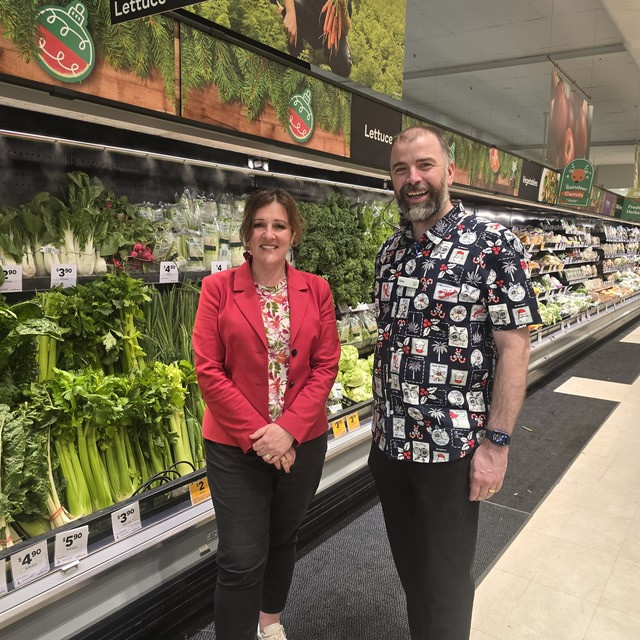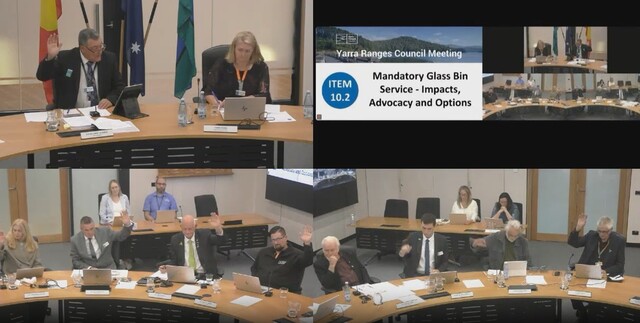An agricultural collapse could be on the horizon for rhe Eastern Dandenong Ranges if management plans are not immediately created for green wedge zones, locals say.
The Eastern Dandenong Ranges Association (EDRA) chairman John Wall envisions “dormitory towns, empty paddocks and weed and vermin filled gullies”, as Gembrook, Emerald and Cockatoo’s rural sectors continue to wait for Cardinia Shire Council to future-proof the area.
According to the Department of Transport and Planning, “councils must prepare green wedge management plans because the land and conditions in each green wedge vary”.
That would allow for locals to plan how to re-build and sustain more viable agricultural businesses in the area, Mr Wall explained.
Yet, Cardinia Shire Council’s management plan for the Yarra Valley and Yarra and Dandenong Ranges green wedge zone has been waiting 20 years, Mr Wall said.
When green wedge zones were first implemented by the State Government in 2003, the Yarra Valley and Yarra and Dandenong Ranges Green Wedge was mapped as including non-urban land within the Shire of Yarra Ranges, the northern hills area of the Shire of Cardinia, and small portions within the City of Knox and the City of Maroondah.
In July 2010, Yarra Ranges Council adopted its green wedge management plan for the zone.
The southern portion is known as the Northern Ranges Green Wedge and is within the Shire of Cardinia.
According to the Department of Planning, the council has started creation of a Green Wedge Management Plan for the Northern Ranges.
Although Cardinia Shire completed an issues study on the zone in 2010, EDRA is calling the council to complete the management plan so that people can confidently invest in the area.
“Anyone investing in an agricultural enterprise is taking a massive punt because we don’t know where we’re headed,” Mr Wall said.
“Are we going to do grapes like the Yarra Valley, berries like Silvan, orchards? What’s the future of food production in this area?
“Or simultaneous to that, in the absence of any investment in the ag sector, there’s also opportunity to reinvent the district for recreation and rural lifestyle living.”
Cardinia Shire’s issues plan found that in 1995, Gembrook produced around 10,000 tonnes of potatoes, occupying around 400 hectares under crop at any given time.
Unfortunately, the discovering of potato cyst nematode devastated the area, and restrictions on exportation were introduced.
It was also found the soil had unacceptable levels of the dieldrin pesticide, which limited the options for cattle, ducks and free range chickens (but not for horses and sheep).
As a result of these two issues, morale among the potato growers dropped and many growers saw no future in the local industry.
The issues study stated many farmers would be happy to leave the industry (but not the area), sell their farms and if possible subdivide their properties to allow for a comfortable retirement.
Mr Wall said the dire state of broadacre potato commodity cropping, coupled with the green wedge restrictions, made relying on the potato industry “impossible”.
“Going from 30 families doing spuds, to three in two decades – if that’s not an absolute collapse of an industry, I don’t know what is,” Mr Wall said.
Mr Wall said it all led to a rural crisis in the early 2000s.
“Over time the land size parcels were too small so the returns on the potatoes were too low for the acreage they had. It wasn’t looking viable anymore,” he said.
“So there were two options – buy or lease more land, or get out. With the green wedge rules slapped on, no one wanted to buy the parcels of land we have up here for broadacre cropping.”
Mr Wall said Cardinia Shire Council was in the process of reviewing the township strategy for Gembrook, which was first adopted in 2011.
“The townships in the Eastern Dandenong Ranges are closely linked to each other and the land uses surrounding them,” he said.
“Without a plan for the farming economy and lifestyle landscape surrounding the towns, it is very poor planning, verging on negligent and wasteful, to bumble along with refreshing so-called ‘strategic’ plans for each township, in isolation of each other and the landscape in which they are situated.
“This is especially the case given the Green Wedge Management Plan, properly integrated with the planning scheme, which is supposed to set the scene for planning the future and inform many of the economic opportunities for each township, is so long overdue.”
A Cardinia Shire Council spokesperson said The Planning and Environment (Metropolitan Green Wedge Protection) Act 2003 focuses on the protection of green wedge land but did not require the preparation of green wedge management plans.
“The preparation of green wedge management plans has been at the discretion of each council that has green wedge land within its municipal boundary,” they said.
Cardina Shire adopted the Western Port Green Wedge Management Plan for the southern part of the shire in 2017.
Information provided by the Victorian Government revealed recent legislative changes were made to the Planning and Environment Act 1987 to make clear the objectives of planning for these important areas, which contribute to the prosperity, health and wellbeing of Victorians.
“Recent legislative changes were made to make clear the objectives of planning for these important areas, including requiring councils to prepare Green Wedge Management Plans,” a Victorian Government spokesperson said.
Plans to be prepared for all green wedge land. Plans must be reviewed every 10 years.
Planning Practice Note 31 ‘Preparing a Green Wedge Management Plan’ remains in place to support councils’ preparation of plans.
The practice note also explains why Green Wedge Management Plans are important in ensuring the sustainable management of green wedges.
The amendment does not impose a specific deadline for the completion of these plans.







